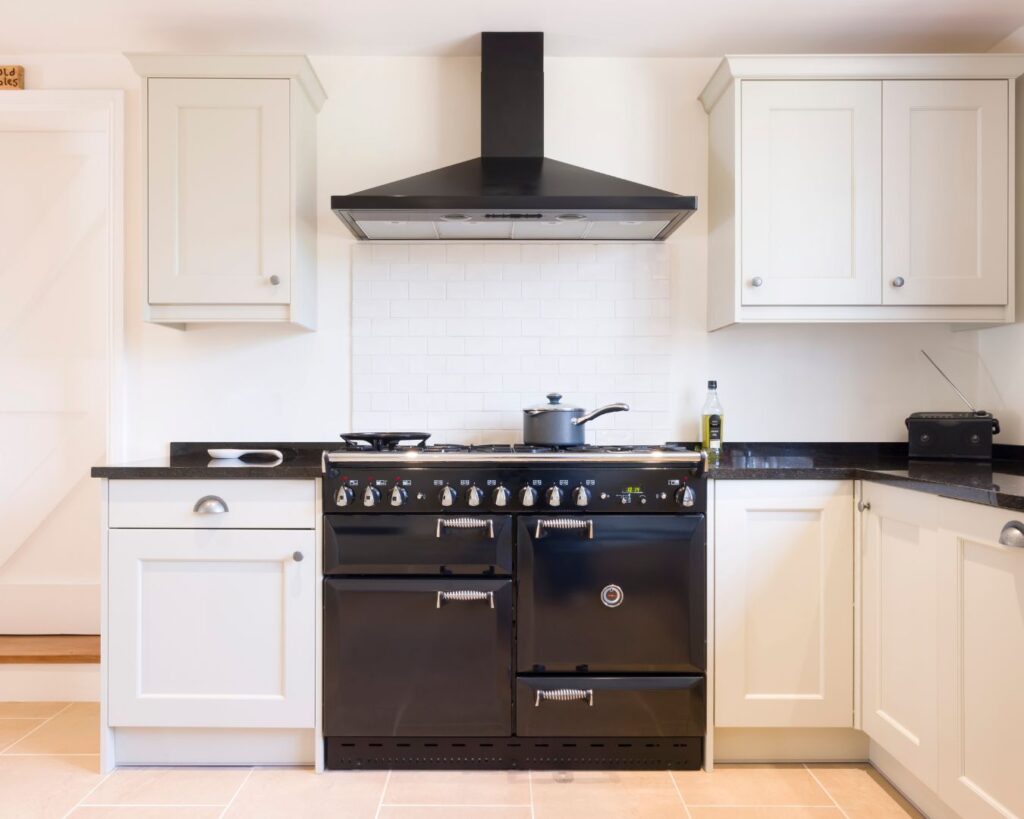Tips for Cleaning and Maintaining a Kitchen Range Hood
A kitchen range hood is an essential appliance that helps keep your kitchen free from smoke, odors, grease, and airborne contaminants. However, to ensure your range hood operates efficiently and lasts for years, regular cleaning and maintenance are crucial. Here are some practical tips for cleaning and maintaining your kitchen range hood.
Clean the Range Hood Filters Regularly
The filters in your range hood are designed to trap grease and other particles, preventing them from circulating back into your kitchen. Over time, these filters can become clogged, reducing the efficiency of your range hood. Here’s how to clean them:
- Metal Filters: Most range hoods have metal filters that can be easily removed and cleaned. Wash them in hot, soapy water or run them through a dishwasher on a gentle cycle. For stubborn grease buildup, soak the filters in hot water with a bit of baking soda before scrubbing.
- Charcoal Filters: If your range hood has charcoal filters, they are usually not washable and should be replaced every 6 to 12 months, depending on usage. Check your manufacturer’s instructions for specific recommendations.
Wipe Down the Exterior Regularly
The exterior of your range hood can quickly accumulate grease, dust, and grime, especially in a busy kitchen. To keep it looking its best:
- Use a Mild Cleaner: Wipe down the exterior with a soft cloth and a mild cleaner or a mixture of warm water and dish soap. Avoid abrasive cleaners that can scratch the surface.
- Stainless Steel Care: If your range hood is stainless steel, use a stainless steel cleaner or a mixture of water and white vinegar to keep it shiny and free of smudges. Always wipe in the direction of the grain to avoid streaks.

Clean the Vent and Ductwork
The vent and ductwork of your range hood are responsible for carrying smoke, steam, and odors out of your kitchen. Over time, grease and residue can build up inside the ducts, potentially causing blockages or reducing airflow. To maintain proper ventilation:
- Inspect Annually: Have a professional inspect and clean the ductwork at least once a year. This helps prevent buildup that can affect the performance of your range hood.
- DIY Cleaning: If you prefer to clean the ducts yourself, disconnect the power, remove the vent cover, and carefully wipe down the inside with a degreaser and a long-handled brush. Be sure to reach as far as possible to remove any accumulated grease.
Check and Clean the Fan Blades
The fan inside your range hood plays a critical role in drawing air through the filters and out of your kitchen. Over time, grease and debris can accumulate on the fan blades, reducing their effectiveness. To clean the fan:
- Turn Off the Power: Always turn off the power to your range hood before cleaning the fan to avoid accidents.
- Access the Fan: Remove the filters and, if necessary, the fan cover to access the blades. Carefully wipe down the blades with a cloth soaked in warm, soapy water or a degreaser. Be gentle to avoid bending or damaging the blades.
Replace Light Bulbs as Needed
Many range hoods come with built-in lights that provide extra illumination while you cook. Over time, these bulbs may burn out and need replacement. To replace the bulbs:
- Turn Off the Power: Before replacing any bulbs, turn off the power to the range hood to prevent electrical shock.
- Choose the Right Bulb: Refer to your user manual for the correct type and wattage of the replacement bulbs. Some range hoods require specific bulbs designed for high heat environments.
- Install Properly: Carefully remove the old bulb and replace it with the new one. Ensure it’s screwed in securely but not too tightly.

Perform Regular Inspections
Routine inspections can help you identify potential issues with your range hood before they become major problems. During your inspection:
- Check for Blockages: Ensure that the vent and ductwork are clear of any obstructions. Blockages can reduce airflow and increase the risk of overheating.
- Listen for Unusual Noises: If your range hood makes unusual noises while in operation, it may indicate a problem with the fan or motor. Address these issues promptly to avoid further damage.
- Test the Controls: Make sure all buttons, switches, and controls are functioning properly. If any controls are unresponsive, they may need to be repaired or replaced.
Replace Parts When Necessary
Over time, certain components of your range hood, such as the fan, motor, or filters, may wear out and need replacement. Regular maintenance helps extend the life of these parts, but when they do need replacement:
- Use OEM Parts: Always use original equipment manufacturer (OEM) parts or those recommended by the manufacturer. These parts are designed to work seamlessly with your range hood.
- Hire a Professional: If you’re unsure about replacing parts yourself, it’s best to hire a professional technician. They can ensure the replacement is done correctly and safely.
Schedule Professional Maintenance
While regular DIY maintenance is important, scheduling professional maintenance once a year is a good idea. A professional can thoroughly clean and inspect your range hood, ensuring it operates efficiently and safely. They can also identify and address any issues that may not be apparent to the untrained eye.
A clean and well-maintained kitchen range hood is essential for a healthy, functional kitchen. By following these tips, you can ensure that your range hood continues to operate efficiently, removing smoke, odors, and grease from your cooking area. Regular maintenance not only extends the life of your appliance but also contributes to a cleaner, safer kitchen environment.

